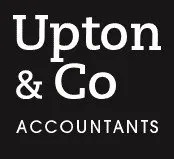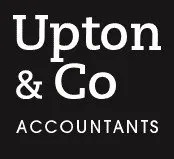Leasing goods to a connected business
Your business owns assets that are leased to a connected business and you charge a monthly fee plus VAT. Is there a risk that HMRC could take action by issuing a so-called “Schedule 6 notice”?

Purpose of arrangement
You might keep your fixed assets in a separate legal entity compared to your main trading business. This will protect the assets from being repossessed if your trading business suffers financial problems.
For example, if you trade as a pub or restaurant and own the freehold of your trading premises, you could keep the property in a separate business and charge a commercial rent to the trading entity.
Your property business can opt to tax its interest in the building with HMRC and charge VAT to the trading entity on the rental income. It can then claim input tax on costs it incurs, e.g. capital improvement or repair works.
The option to tax election means that you must charge VAT if you sell the property in the next 20 years, which will create an extra cost if a buyer cannot claim input tax.
VAT registration
If your connected business leasing the assets is registered for VAT and able to fully claim input tax on its expenses, there will be no problem with the value of the leasing fees that you charge. This is because a charge of £1,000 plus VAT and £5,000 plus VAT produces the same outcome because “there is neither a loss nor a gain to the revenue”. But what if this is not the case?
Schedule 6 notice
If your business charges less than the open market value for leasing the equipment to a connected business that is not able to fully reclaim input tax, HMRC could issue a written direction to collect output tax underpaid in the last three years. A “Schedule 6 Notice of Direction” is a reference to the legislation that gives this power to HMRC.
The legislation confirms that HMRC “may direct that the value of the supply shall be taken to be its open market value”. This discretion, “may” rather than “will”, recognise that it is often difficult to establish the market value of a supply, so officers will target valuations that have been significantly understated.
Under VATVAL07300, a connected business arrangement happens when parties are “related or are companies controlled by the same person or persons”. For example, “a person is connected to a spouse, civil partner, relative, or relative of a spouse or civil partner.”
Review arrangements
If you lease assets or equipment to a connected business that is not able to fully claim input tax, you should review the arrangement now and check that the charges are based on open market values. For example, have your fees been increased each year to recognise the impact of inflation?
Example. Acom Ltd is registered for VAT and owns assets and equipment worth £1m plus VAT, which are rented out for the sole use of its subsidiary company Bcom Ltd for £5,000 plus VAT each year. The breakeven period for Acom is 200 years (£1m divided by £5,000), indicating that the charge is being understated to save irrecoverable input tax for Bcom. An HMRC notice of direction is likely to be issued.
Related Topics
-
Government rushes through NI cap on pension salary sacrifice
The government has already drafted legislation to impose a £2,000 limit on NI exempt pension contributions under salary sacrifice arrangements. What else do we know?
-
Sneaky change is a blow for side hustles
With most of the media focused on the headline-grabbing announcements from the Budget, a read of the published small print reveals another change coming in 2029. It’s bad news if you are an employee with a side hustle, but what’s going on?
-
Dodging the 2027 IHT and pension changes
In a little over a year the inheritance tax (IHT) exemption for unused pension savings comes to an end. If you’re married or in a civil partnership, one simple step might save your estate thousands in IHT. What is it?




 This website uses both its own and third-party cookies to analyze our services and navigation on our website in order to improve its contents (analytical purposes: measure visits and sources of web traffic). The legal basis is the consent of the user, except in the case of basic cookies, which are essential to navigate this website.
This website uses both its own and third-party cookies to analyze our services and navigation on our website in order to improve its contents (analytical purposes: measure visits and sources of web traffic). The legal basis is the consent of the user, except in the case of basic cookies, which are essential to navigate this website.